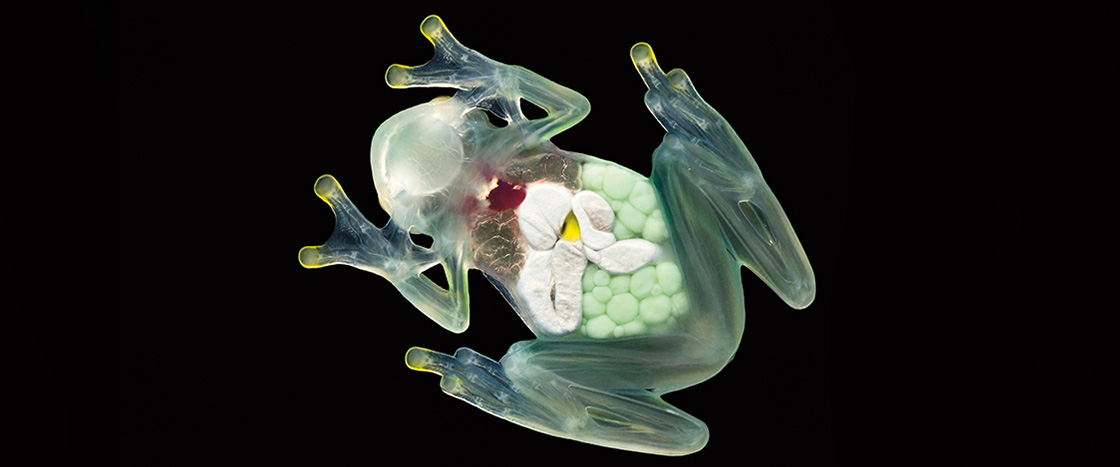Most glass frogs live in rainforests across Central and South America. The slimy skin on their backs is light green. But the skin on their legs and bellies is translucent. Why?
Scientists believe that the frogs’ limpid skin helps the animals better blend in with their environment—and conceal themselves from birds that might attack them. Plus, the frogs are tiny—often about the size of a quarter.
These adaptations, or body traits that help animals survive, help keep the frogs alive in the wild. Glass frogs 1, birds 0!

